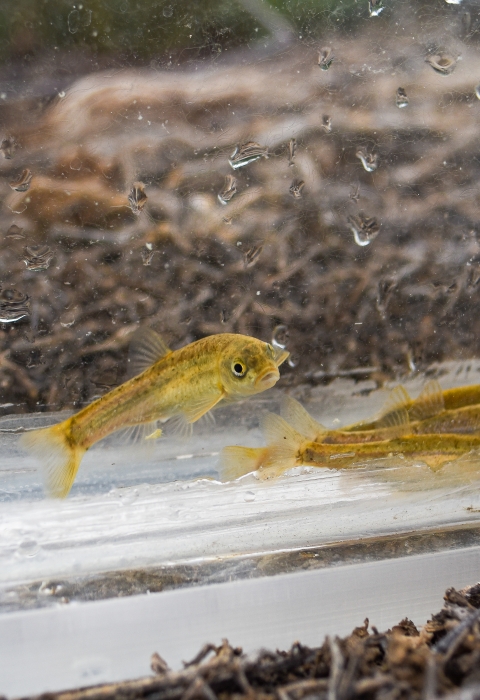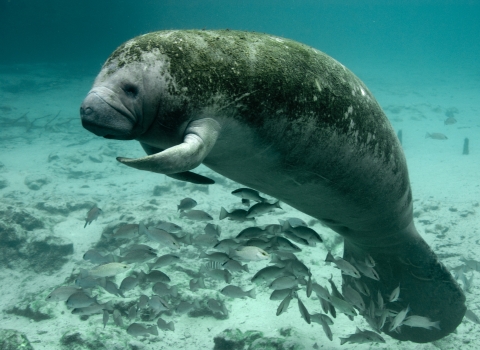RENO, Nevada – The U.S. Fish and Wildlife Service announced today that it is opening a 60-day public comment period on the proposed rule to list the Long Valley speckled dace, a small freshwater fish native to California's Owens Valley at the base of the Eastern Sierra, as endangered under the Endangered Species Act.
Using the Service’s Species Status Assessment framework, we determined that Long Valley speckled dace, a subspecies of speckled dace, warrants the protections of the ESA due to ongoing threats from non-native invasive fish, disease, recreation, and water diversion, geothermal development, climate change climate change
Climate change includes both global warming driven by human-induced emissions of greenhouse gases and the resulting large-scale shifts in weather patterns. Though there have been previous periods of climatic change, since the mid-20th century humans have had an unprecedented impact on Earth's climate system and caused change on a global scale.
Learn more about climate change and small population size.
Long Valley speckled dace are small, often less than 8 centimeters in length, and live in cold-water to hot springs with water temperatures up to 84 degrees Fahrenheit. The subspecies once lived in seven locations within the Long Valley Caldera in Mono County. Today just one wild population exists at Whitmore Marsh near the Town of Mammoth Lakes.
“Part of the magic of the Eastern Sierra is in the wildlife that live there, like these remaining fish populations. Habitat at the six historical sites has either disappeared or become unsuitable,” said Sam Luginbuhl, a fish and wildlife biologist for the Service in Reno, Nevada. “Some of the springs have been absorbed by other water bodies while other sites can no longer support the dace due to the presence of non-native fish or modification of habitat for other land uses.”
The Service works with our partners, the California Department of Fish and Wildlife, Los Angeles Department of Water and Power, the Whitmore Marsh landowner, UCLA’s White Mountain Research Center, and the Inyo National Forest to conserve the existing population and potentially establish new populations in suitable locations in the area.
In 2023, CDFW, who has led local conservation of the species, recorded the highest number of the fish in Whitmore Marsh in years. In 2022, CDFW, translocated Long Valley speckled dace from a refuge population at the White Mountain Research Center to suitable habitat in the Inyo National Forest.
“While it’s too soon to say if the translocated population is self-sustaining, I’m excited to work with our partners on future projects like the translocation for the benefit of Long Valley speckled dace,” said Luginbuhl. “They are a special, unique fish to this beautiful area and together we’ll work to help conserve them for future generations.”
A 60-day comment period on the proposed rule opens August 8, 2024 and closes October 7, 2024. Information on how to submit comments can be found at www.federalregister.gov by searching for docket number FWS-R8-ES-2021-0065.
The U.S. Fish and Wildlife Service works with others to conserve, protect, and enhance fish, wildlife, plants and their habitats for the continuing benefit of the American people. For more information about our work and the people who make it happen, visit https://www.fws.gov/office/reno-fish-and-wildlife or connect with us via Instagram, Facebook, X/Twitter, YouTube and Flickr.




